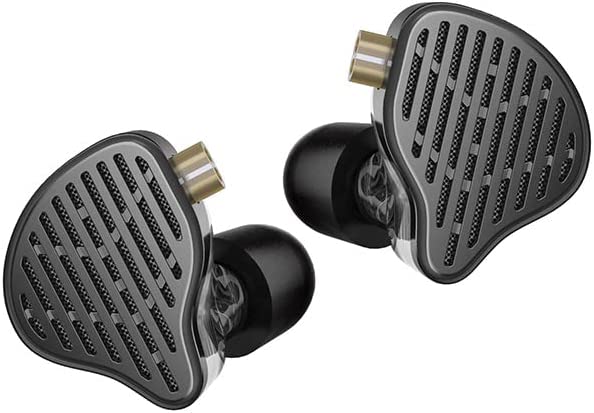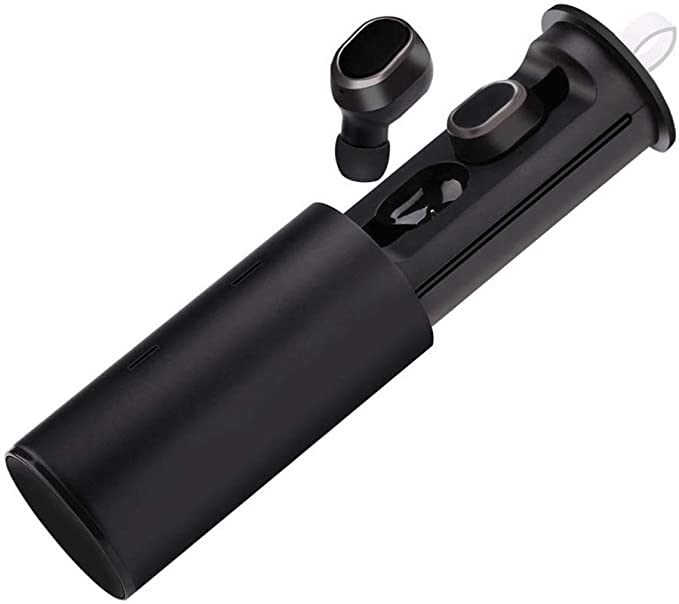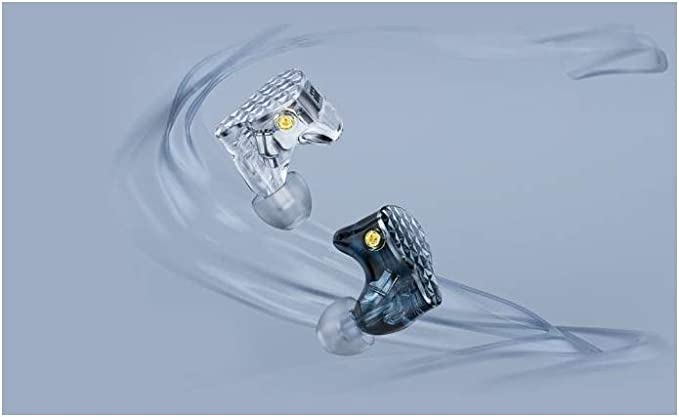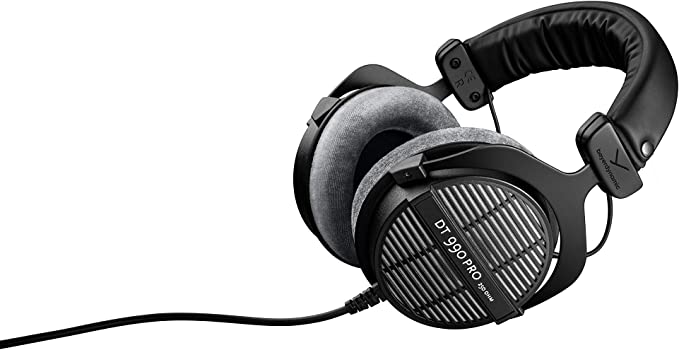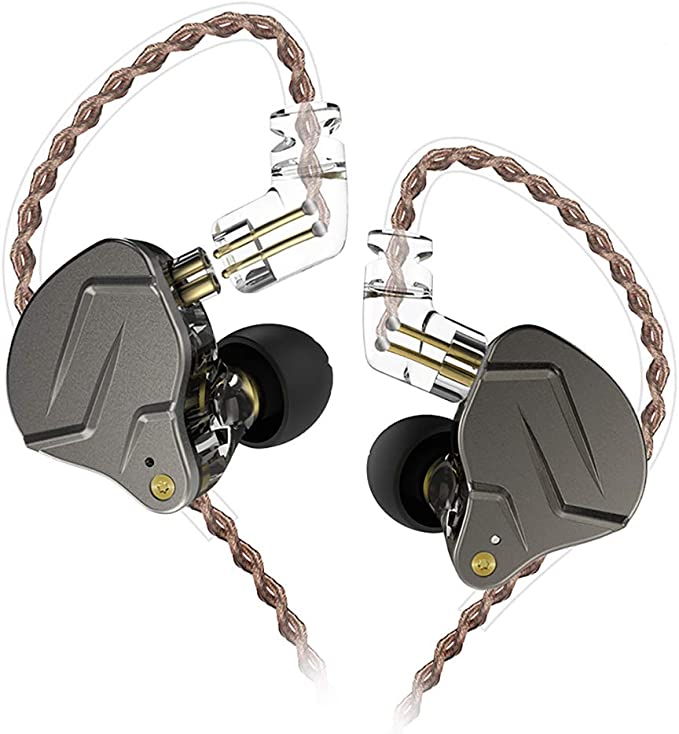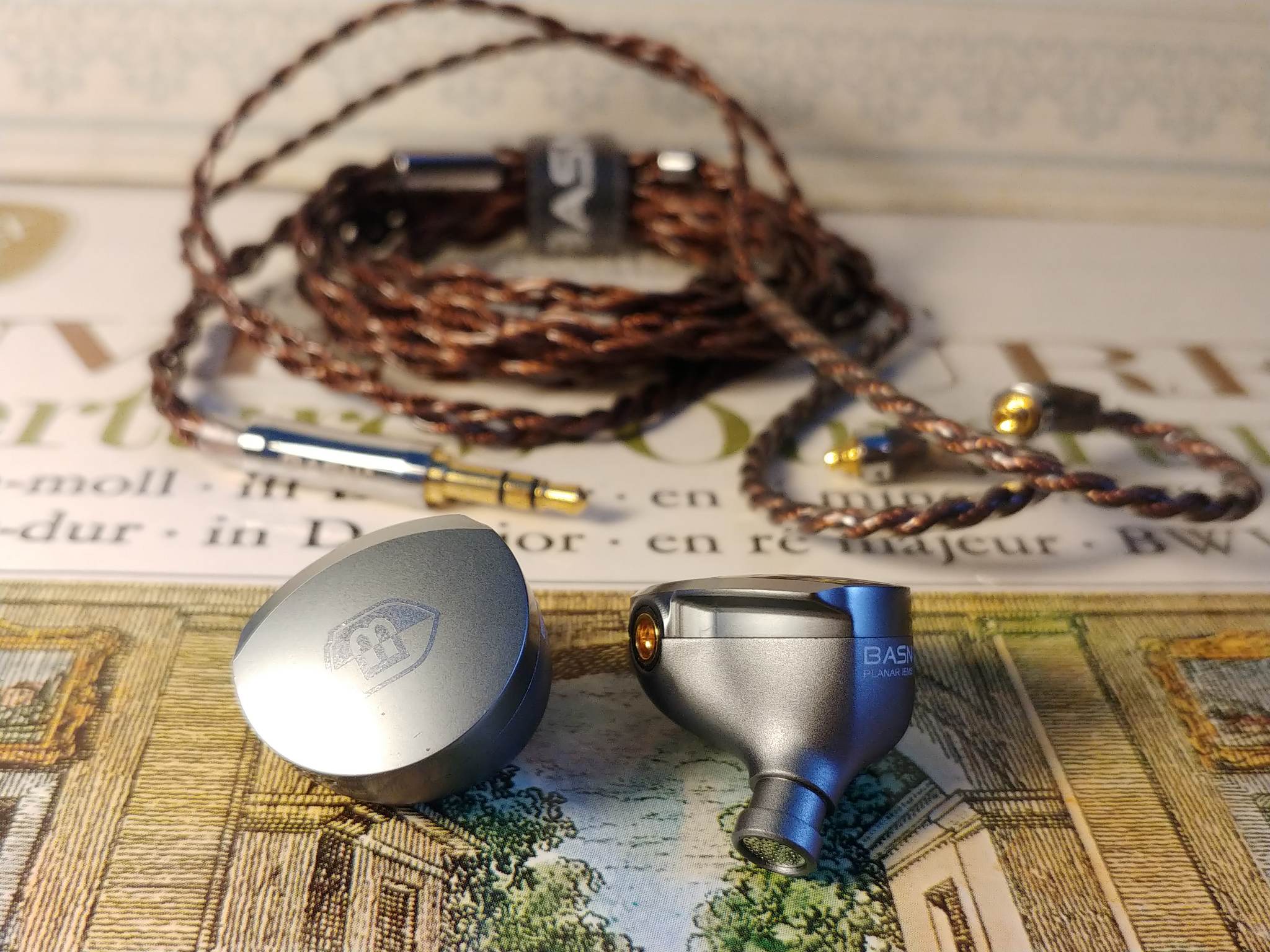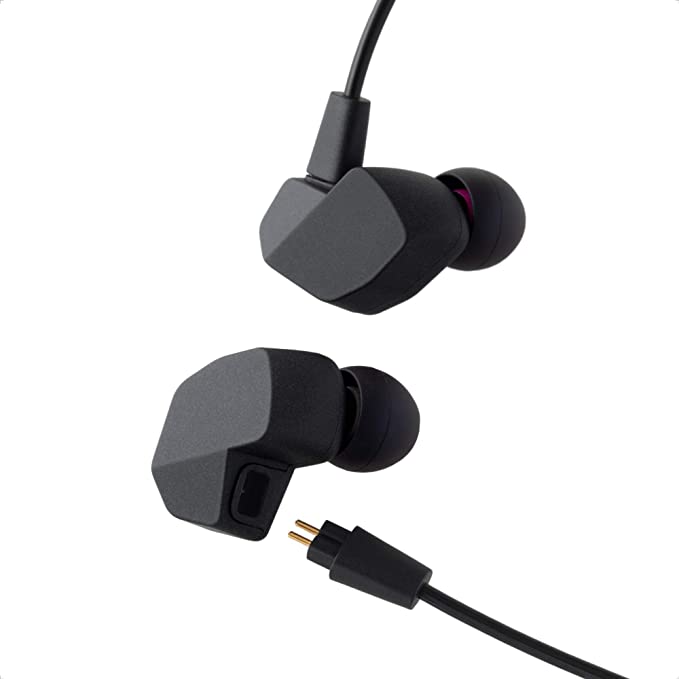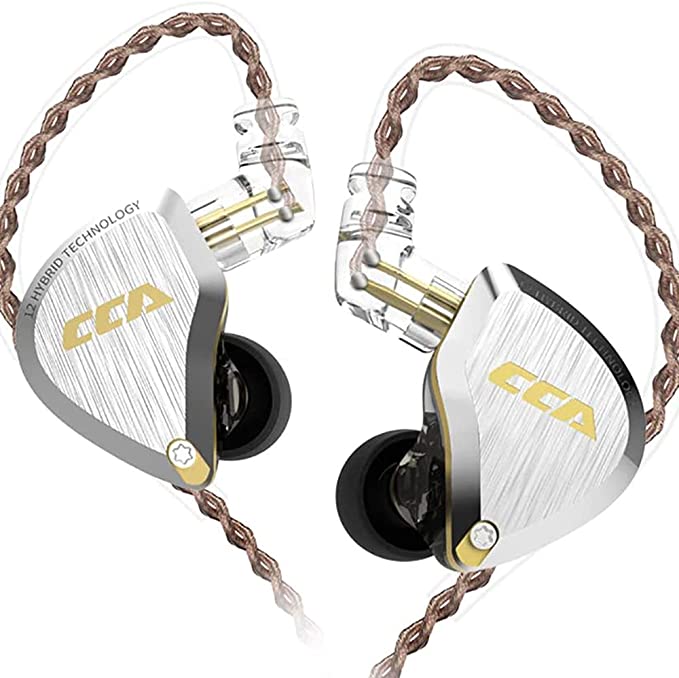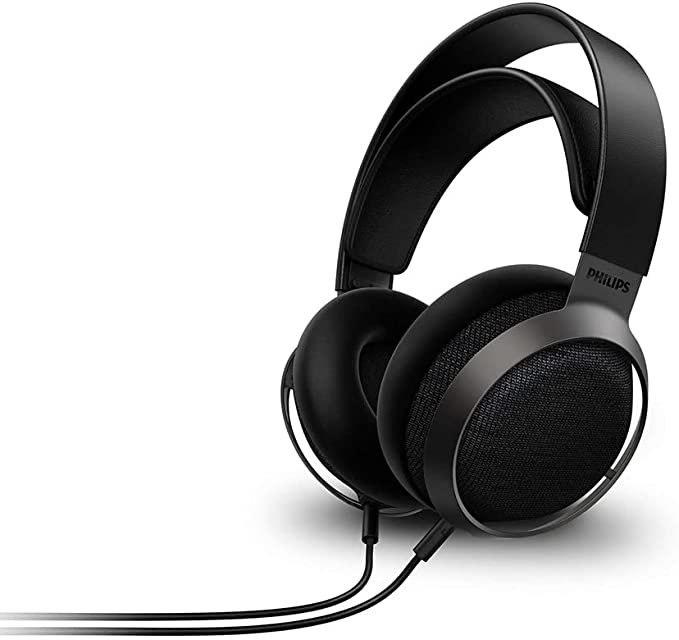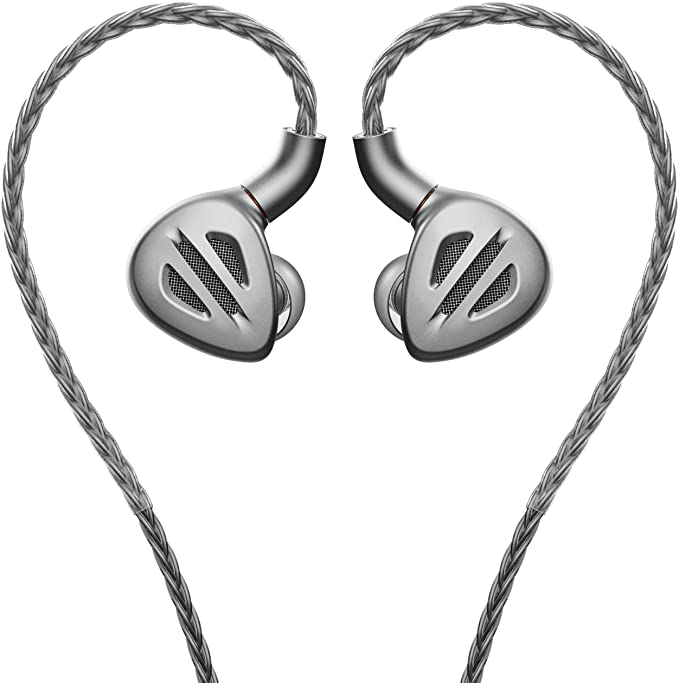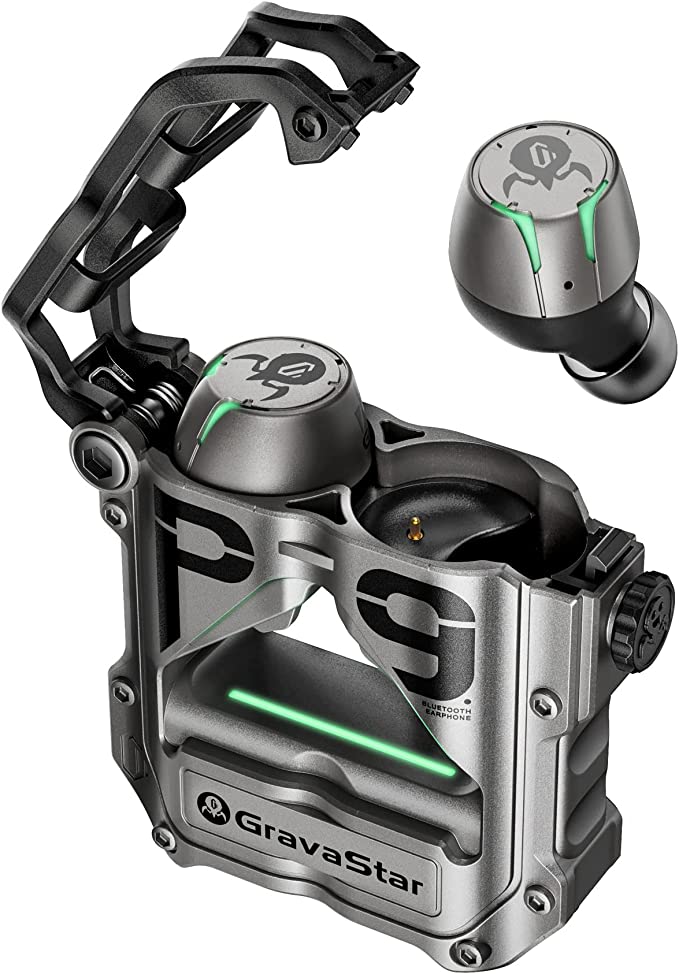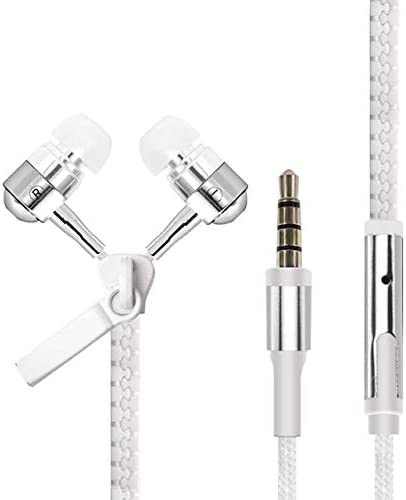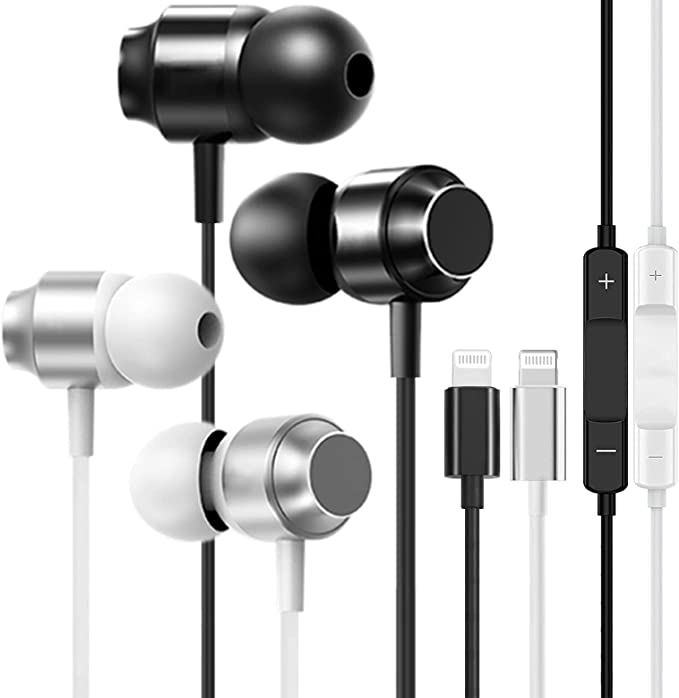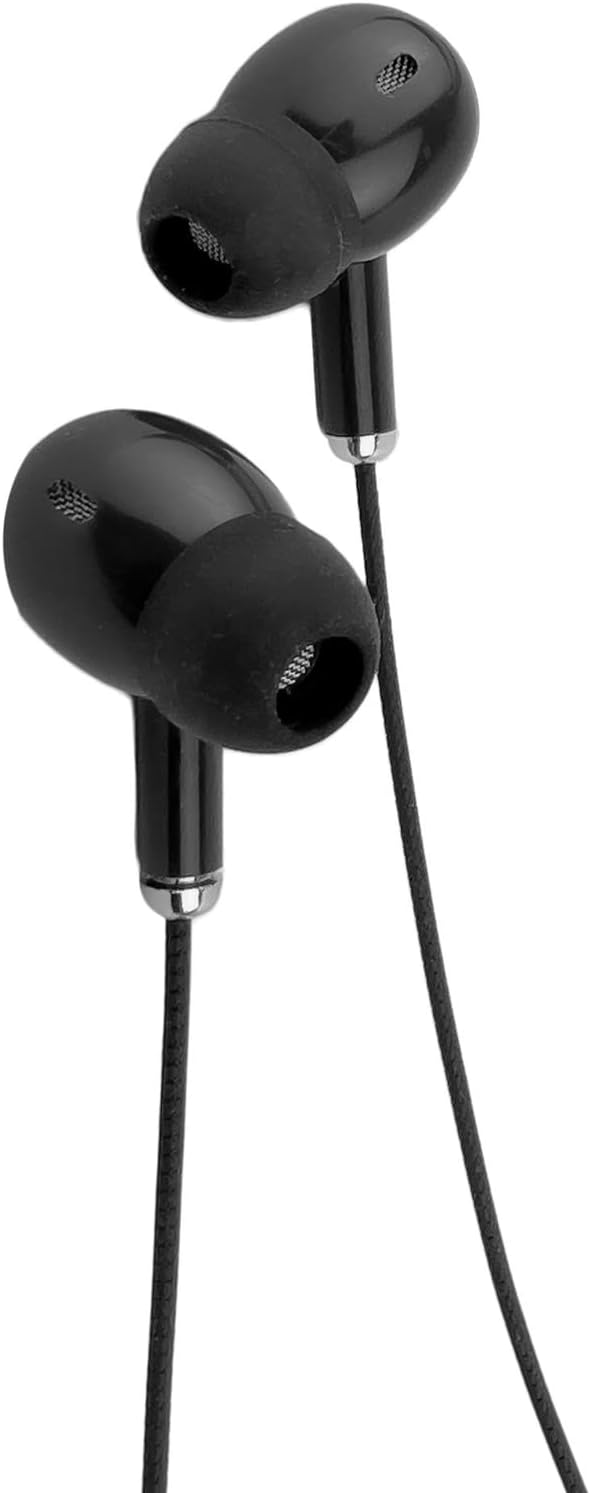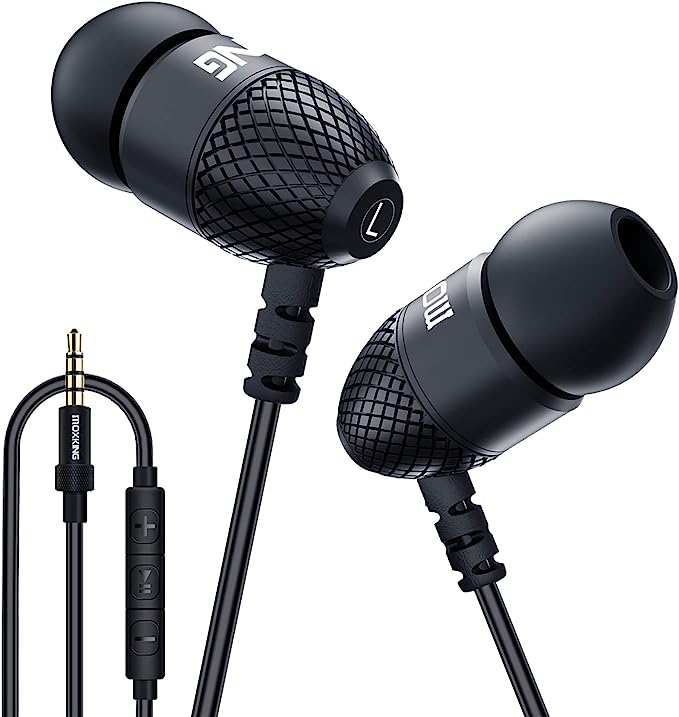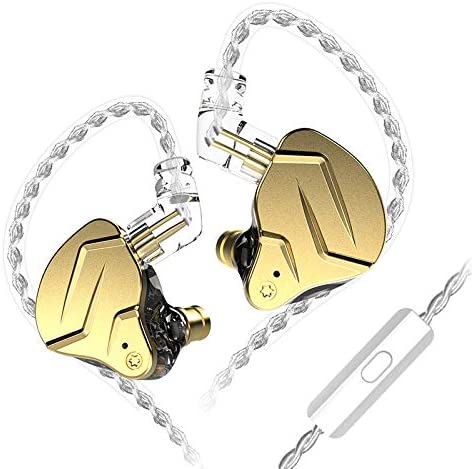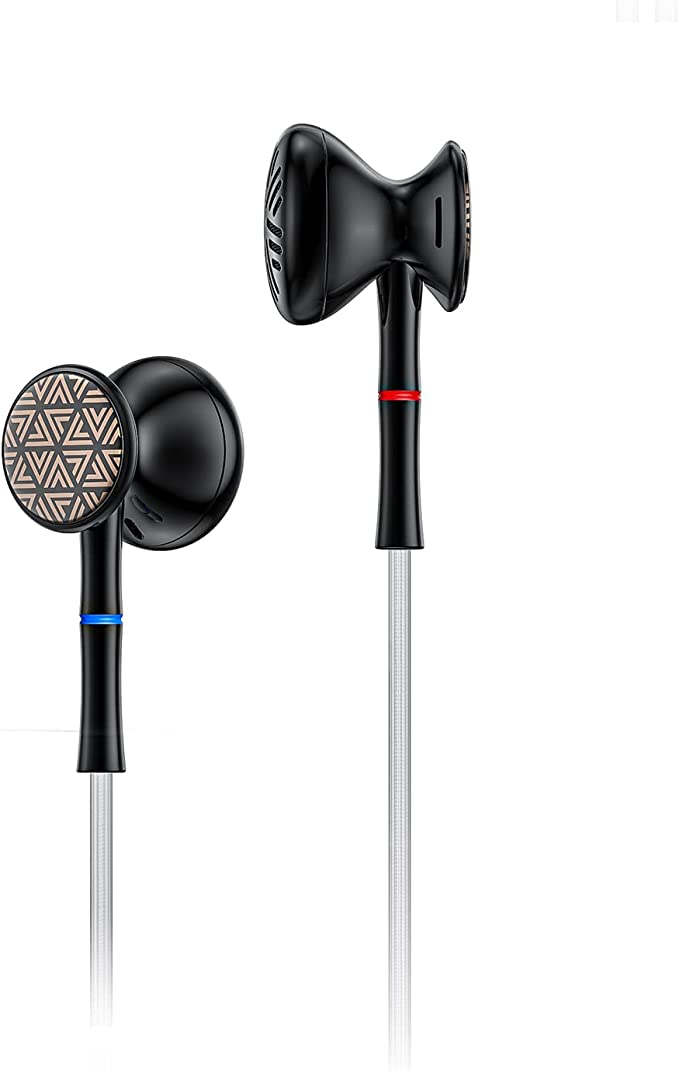YINYOO Easy KZ ZST Colorful Hybrid Balance Armature In-Ear Headphones: A Budget-Friendly Hybrid Driver Earphone
Update on May 30, 2025, 2:14 p.m.
In our bustling world, awash with a cacophony of sounds, the desire for a personal oasis of immersive audio is a shared human yearning. We crave to rediscover the subtle nuances in a cherished melody, to feel the resonant thump of a bassline, or to simply lose ourselves in the intricate tapestry of a well-crafted soundscape. Often, the perception is that such profound listening experiences are the exclusive domain of expensive, esoteric equipment. But what if the gateway to a richer auditory world was more accessible than we thought? Enter the YINYOO Easy KZ ZST, an unassuming in-ear monitor that has garnered a devoted following, largely by promising a taste of “Hi-Fi” (High-Fidelity) sound without demanding a significant investment. Currently often found around the $19.99 mark, it begs the question: what sonic alchemy allows such a budget-friendly device to punch so far above its weight? The answer lies not in magic, but in clever engineering, particularly its hybrid heart.

The Dual-Hearted Performer: Unpacking Hybrid Driver Magic
At the core of the KZ ZST’s surprising performance is its “hybrid” nature, specifically a “1BA+1DD” configuration. This cryptic alphanumeric soup simply means each earpiece houses two different types of miniature speaker drivers working in concert: one Balanced Armature (BA) driver and one Dynamic Driver (DD). Think of it like a miniature orchestra, where different instruments are uniquely suited to play different parts of the musical score. This approach allows for a more nuanced and complete sonic picture than a single driver might typically achieve alone, especially at this accessible end of the market.
The Dynamic Driver – The Soulful Bassist
Imagine the robust, air-moving woofer in a traditional home loudspeaker, shrunk down to fit snugly within an earpiece – that’s essentially your dynamic driver. This workhorse of the audio world consists of a diaphragm (a thin, flexible membrane) attached to a voice coil, which is suspended within a magnetic field. When the electrical audio signal from your music player flows through this coil, it creates a fluctuating magnetic force. This force causes the coil, and in turn the diaphragm, to vibrate rapidly back and forth, much like a tiny piston. These vibrations displace air, creating the sound waves that our ears perceive.
Dynamic drivers are renowned for their ability to move significant amounts of air, making them particularly adept at reproducing the lower frequencies – the satisfying thump of a kick drum, the deep growl of a bass guitar, or the resonant warmth that gives music its foundational weight. In the KZ ZST, the dynamic driver is the soulful bassist of our miniature orchestra, laying down a rich, often described as “vigorous,” performance in the bass and mid-bass regions, providing that tangible impact and fullness that makes music feel alive and engaging. It’s the driver that lets you feel the rhythm as much as hear it.

The Balanced Armature – The Nimble Virtuoso
Complementing the dynamic driver is the balanced armature driver, a marvel of miniaturization often found in hearing aids before making its mark in high-fidelity audio. Unlike the air-pushing piston of a dynamic driver, a BA operates on a more intricate, almost watch-like mechanism. Inside its tiny casing, a minuscule reed (the “armature”) is precisely balanced between two magnets, surrounded by a coil. When the audio signal energizes this coil, it causes the armature to pivot with incredible speed and precision. This minute movement is then transferred to an extremely small, stiff diaphragm, which generates sound waves.
The inherent design of a BA driver lends itself to exceptional agility and detail retrieval, particularly in the midrange and higher frequencies. Think of it as the nimble virtuoso of our orchestra – perhaps a fleet-fingered violinist or a crystal-clear soprano. BAs excel at rendering the crisp shimmer of cymbals, the delicate breath in a singer’s voice, the subtle pluck of a guitar string, or the complex harmonics that give instruments their unique timbre. Their fast transient response means they can keep up with rapid musical passages without smearing the details. In the KZ ZST, the balanced armature is tasked with bringing clarity, articulation, and that “extremely rich” texture to the mids and treble, ensuring that the finer points of the music aren’t lost beneath the engaging bass.
The Conductor’s Baton – How They Play in Harmony (The Crossover Concept)
Simply throwing two different types of drivers into an earpiece doesn’t automatically guarantee great sound. The real art – and science – lies in making them work together cohesively. This is where the concept of a “crossover” comes into play, even in a simplified form within budget-friendly designs like the ZST.
Imagine our orchestral conductor ensuring the bassist isn’t drowning out the violinist, and that each musician plays their part at the right time and in the correct frequency range. Similarly, a crossover network (which can be a combination of simple electronic components or a result of acoustic design) directs specific frequency ranges to the driver best suited to reproduce them. The lower frequencies are channeled primarily to the dynamic driver, while the midrange and higher frequencies are sent to the balanced armature.
The goal is to create a seamless blend, where the robust bass of the DD transitions smoothly into the detailed mids and highs of the BA, providing a sound signature that is fuller, more detailed, and covers a wider frequency spectrum (the ZST claims a wide 20Hz-40,000Hz range) than either driver might manage alone. While complex, multi-driver IEMs employ sophisticated crossover systems, the KZ ZST achieves a functional synergy that has impressed many listeners given its price, allowing each “engine” in its dual-hearted system to contribute its strengths to the overall sonic tapestry. It’s this careful (or at least, carefully considered for the cost) division of labor that underpins the “HiFi” aspiration of these earphones.
Beyond the Beat: Crafting the Complete Listening Journey
While the hybrid driver system is undoubtedly the star of the show, the overall listening experience delivered by the KZ ZST is also shaped by several other thoughtful design considerations that often go unnoticed, yet play a crucial role in both comfort and sound quality. These elements demonstrate an understanding that an earphone is more than just its drivers; it’s an intimate interface between technology and the human auditory system.
The Art of the Fit – More Than Just Comfort
Anyone who has struggled with ill-fitting earbuds knows that discomfort can quickly ruin even the most sublime audio. The KZ ZST addresses this with an ergonomic design, featuring a housing shape that aims to nestle naturally within the concha of the ear. This physical form is crucial, not just for stability, but for directing sound effectively into the ear canal.
A key component in achieving this comfortable and secure fit is the “memory wire technology” integrated into the initial section of the cable, designed to loop over the top of the ear. Think of this as a customizable anchor. The wire retains the shape you mold it to, creating a personalized contour around your ear. This over-ear routing offers several benefits: it distributes the earphone’s weight more evenly, preventing the earpieces from being easily tugged out during movement, and significantly reduces “microphonics.” Microphonics is that annoying thumping or rustling sound you hear when an earphone cable rubs against your clothing; by securing the cable over the ear, this effect is greatly minimized. It’s a small detail that contributes significantly to an uninterrupted listening experience, whether you’re on a brisk walk, your daily commute, or simply moving around your home. As the product description states, this design aims for a “solid ergonomic wear experience, Durable…providing a locked-in fit.”
Eartips – The Unsung Heroes of Sound
Perhaps the most underestimated component of any in-ear monitor is the eartip. The KZ ZST, like most IEMs, comes with a selection of silicone eartips, and the product page even mentions “patent technology silicon tips” designed for a “more comfortable fit human ear” and to “get better quality experience.” The importance of choosing the right size and achieving a proper seal cannot be overstated – it’s fundamental to the science of good in-ear sound.
Airtight Seal and Bass Response: When an eartip creates a complete seal within your ear canal, it forms a small, closed acoustic chamber. This seal is absolutely critical for accurate bass reproduction. If the seal is poor, bass frequencies, which rely on moving a contained volume of air, will “leak” out, resulting in a sound that is thin, tinny, and devoid of impact. Many users, like Pratyaksh Agarwal who noted “I replaced the ear-tips and immediately fell in love with the sound,” discover that experimenting with different eartips (stock or aftermarket, silicone or foam) can dramatically alter, and often improve, the perceived sound quality, especially in the low end.
Acoustic Isolation: This same seal is also the foundation of passive noise isolation. By physically blocking the ear canal, the eartips act as a barrier, preventing a significant amount of ambient sound from the outside world from reaching your eardrums.
Your Personal Sound Bubble – The Magic of Passive Isolation
The KZ ZST’s “noise canceling” feature, as mentioned in its description, refers to this passive noise isolation. It’s crucial to distinguish this from Active Noise Cancellation (ANC), a more complex technology found in pricier headphones that uses microphones and electronics to actively counteract external noise. Passive isolation, in contrast, is achieved purely through the physical obstruction provided by the well-sealed earpiece.
Imagine yourself in a bustling café, the clatter of cups and the murmur of conversations forming a distracting backdrop. Or picture your daily train commute, with its inherent rumbles and announcements. A good pair of isolating IEMs like the ZST can significantly reduce these ambient sounds, creating a more intimate and focused listening environment. This allows you to enjoy your music, podcasts, or audiobooks at lower, safer volumes, as you’re not constantly trying to overcome the noise around you. While it won’t render the world completely silent like high-end ANC might, effective passive isolation, as aimed for by the ZST’s design and eartips, can “improve noise canceling performance” to a degree that markedly enhances the listening experience, especially in moderately noisy environments.
Wired for Sound, Designed for Life – The Detachable Cable Advantage
A frequent point of frustration and failure for many earphone users is a damaged cable – a frayed wire near the plug, a broken connection at the earpiece, or an internal break from repeated stress. Recognizing this, the KZ ZST incorporates a detachable cable system, typically utilizing a 2-pin connector (a common standard for many “Chi-Fi” IEMs, though the exact type isn’t always specified on Amazon, experienced users like DocHolliday refer to the ZST’s 2-pin upgrade cables). The product itself uses a “3.5MM L plug,” a design choice that itself offers practical benefits. The L-shaped plug is generally more robust and less prone to damage when your audio device is in a pocket, as it reduces strain on the cable-jack junction compared to a straight plug.
The detachability offers two main advantages:
- Longevity and Repairability: If the stock cable eventually succumbs to wear and tear, you don’t have to discard the entire earphone. You can simply unplug the damaged cable and replace it with a new one, significantly extending the lifespan of your investment. This is a boon for both your wallet and the environment.
- Customization and Upgrade Potential: The world of audiophilia often involves a degree of tinkering and personalization. A detachable cable opens the door to this. As Yinyoo Audio, the storefront, mentions, they “offer upgrade cable for KZ ZST.” Users might opt for cables made from different materials (like silver-plated copper), with different braiding styles, or even with an in-line microphone if their original ZST was the non-mic version. While the sonic benefits of exotic cable materials are often debated, the ability to choose a cable for its ergonomic properties, durability, or added functionality is an undeniable plus.
These design choices – the ergonomic shell, the memory wire, the crucial eartip seal, and the practical detachable cable – all work in concert with the hybrid drivers to create an earphone that aims to be more than the sum of its parts, offering a surprisingly complete and user-focused package for its modest price.
Ears on Experience: What the Listeners Report & What It Means
Technical specifications and design philosophies provide a fascinating insight into how an earphone should perform, but the true measure of its success lies in the actual listening experience. The YINYOO Easy KZ ZST has accumulated a significant number of user reviews, and these subjective accounts offer valuable perspectives on its real-world sound profile. It’s like moving from the blueprint of a concert hall to actually sitting in the audience during a performance.
Weaving in User Voices: The Collective Impression
One of the most consistent observations from listeners, notably highlighted by experienced reviewer DocHolliday in his extensive October 2016 review, is the KZ ZST’s tendency towards a “V-shaped” sound signature. For those new to audiophile jargon, a V-shape generally means that the bass and treble frequencies are emphasized or boosted, while the midrange frequencies (where vocals and many core instrumentals lie) are comparatively more recessed or laid-back. This can result in a sound that is perceived as energetic, exciting, and immediately engaging, particularly for genres like pop, electronic music, and rock, where a powerful low-end punch and sparkling highs are often appreciated. DocHolliday describes his preference for a “mild ‘V’ shaped sound signature” and notes the ZST is “bass-forward” but also capable of “crystal clear highs.”
This bass-forward nature is a recurring theme. Users often praise the ZST for its ability to deliver satisfying low-end impact. However, a “V-shape” isn’t universally adored. While some find it lively, others might perceive the mids as being somewhat overshadowed. Dominic Wu, another reviewer, also notes a “slight V” which he finds a plus, considering a truly flat sound “unexciting.”
Clarity in the upper registers is another point of positive feedback. The balanced armature driver seems to do its job well here, contributing to that sense of detail and crispness. Anna, who purchased the ZSTs after her $50 KZ IEMs broke, was impressed, stating, “The clarity is amazing, separation of instruments is great, bass is great.” However, she also touched upon another important audiophile concept: soundstage. She wished “the soundstage was a bit wider so you can feel truly submerged in the music.” Soundstage refers to the perceived three-dimensionality of the sound – how wide, deep, and tall the “sonic stage” appears to be in your head. A wider soundstage can create a more immersive, out-of-head listening experience. While the ZST offers good instrument separation according to Anna, its ability to project a vast, concert-hall-like space might be more modest, which is not uncommon for in-ear monitors in this price bracket.
The importance of eartips is a critical takeaway from user feedback, perfectly illustrated by Pratyaksh Agarwal’s July 2023 review: “At first, I was not impressed but then I replaced the ear-tips and immediately fell in love with the sound.” This underscores the scientific principle discussed earlier: a proper seal is paramount. Different eartips (material, shape, bore size) can dramatically alter frequency response, particularly bass quantity and treble smoothness. This “eartip rolling” is a common and often transformative tweak for IEM enthusiasts.
The Subjectivity of Sound and External Factors
It’s vital to remember that listening is an inherently subjective experience. What one person perceives as perfectly balanced, another might find too bassy or too bright. As DocHolliday astutely points out in his review, many factors shape the final sound an IEM delivers:
- Individual ear canal anatomy: Shallow or deep, wide or narrow canals will interact differently with the earpiece.
- Eartip fit and material: As discussed, this is crucial. Silicone offers a different seal and sound than foam tips.
- Source device: The quality of the digital-to-analog converter (DAC) and amplifier in your smartphone, laptop, or dedicated audio player will influence the sound. DocHolliday notes the ZST “just came alive when it was coupled to the more powerful Fiio X3i” compared to a less powerful source, suggesting that while easy to drive (10Ω impedance, 106dB/mW sensitivity), the ZST can scale with better amplification, especially for its dynamic driver to deliver fuller bass.
- Quality of the recording: The ZST, with its revealing BA driver, can be “merciless on poorly recorded material,” meaning flaws in the source audio will be more apparent.
A Note on Care and Potential Quirks
DocHolliday also provides an important cautionary note regarding the balanced armature driver in his early experience with the ZST. He suspected that moisture or earwax could affect the BA’s performance, as it’s positioned close to the nozzle. While manufacturing and design may have evolved since 2016, it’s a good general reminder that IEMs, especially those with sensitive components like BAs, benefit from regular cleaning and careful handling to ensure longevity.
Overall, the user experiences paint a picture of an earphone that, especially for its price, delivers an engaging, often V-shaped sound with commendable bass and clear highs. It highlights the ZST’s potential to delight many listeners, particularly those new to hybrid driver technology, while also reminding us of the importance of good fit, appropriate source pairing, and the wonderfully personal nature of sound perception.
The Bigger Picture: KZ ZST and the Rise of Accessible Hi-Fi
The YINYOO Easy KZ ZST doesn’t exist in a vacuum. Its popularity and the very fact that such a technologically sophisticated earphone (a hybrid, no less!) can be offered at a price point around $19.99 is indicative of broader trends in the personal audio landscape, particularly the phenomenon often dubbed “Chi-Fi.” This informal term refers to the burgeoning wave of high-value, often innovatively designed audio products originating from China that have significantly disrupted the global market.
The “Chi-Fi” Phenomenon: Democratizing Audio Quality
For decades, high-fidelity audio, especially in the portable realm of in-ear monitors, was often associated with premium price tags, exclusive brands, and a certain niche appeal. Brands like Knowledge Zenith (KZ), the manufacturer behind the ZST (with Yinyoo Audio often acting as a prominent online retailer and sometimes collaborator), have played a pivotal role in challenging this status quo. They, along with numerous other similar companies, have leveraged efficient manufacturing, direct-to-consumer online sales models, and rapid iteration of designs to bring surprisingly advanced audio technologies to a mass audience at unprecedentedly low prices.
The KZ ZST, being one of KZ’s early and highly successful forays into hybrid driver IEMs (released around 2016), perfectly exemplifies this trend. It demonstrated that the nuanced sound reproduction capabilities of a dynamic driver working in tandem with a balanced armature – a configuration previously found in much more expensive earphones – could be made accessible to almost anyone with a smartphone and a modest budget. This has had a democratizing effect on audio quality, allowing more people than ever to experience a level of detail and engagement in their music that was previously out of reach. As Dominic Wu mentions in his review, the ZST is part of this “so-called Chi-Fi IEMs” movement that offers remarkable performance without the long wait or high cost traditionally associated with specialized audio gear.
Value Proposition Re-examined: Engineering Per Dollar
When we talk about the value of the KZ ZST, it’s not merely about it being “cheap.” It’s about the remarkable amount of audio engineering and thoughtful design packed into its accessible price. Consider the components and features:
- Hybrid Driver System: The core 1BA+1DD configuration is a significant technological offering at this price.
- Ergonomic Design with Memory Wire: Features aimed at comfort and stability, often found in more performance-oriented IEMs.
- Detachable Cable: A practical feature enhancing longevity and offering customization potential, typically absent in a an entry-level product from mainstream Western brands a decade ago.
- Passive Noise Isolation: Achieved through good design and eartip seal, enhancing the listening experience without the cost of active electronics.
The ZST represents a carefully considered balance of these elements, aiming to deliver the best possible sonic performance and user experience within strict cost constraints. It’s a testament to how focused engineering and high-volume production can drive down the cost of sophisticated technology.
For the Aspiring Audiophile: A Gateway to a Wider World
For many, the KZ ZST serves as an entry point – a “gateway drug,” so to speak – into the wider world of high-fidelity audio. Its engaging sound signature, coupled with its affordability, can spark a newfound appreciation for the details and dynamics in music. It might encourage a listener to pay more attention to recording quality, to explore different genres, or even to investigate other audio equipment like better source players or different types of headphones.
Anna’s review captures this sentiment perfectly: “These will for sure hold me over until I can save up for true custom in ear monitors from bands like ultimate Ears. Definitely recommend these. Great sound at a great price.” The ZST, for her and many others, is not necessarily an “end-game” product, but an excellent, highly satisfying stepping stone on their personal audio journey. It allows them to experience a significant jump in sound quality from generic pack-in earbuds without a hefty financial commitment, fostering a deeper connection with their music and, potentially, a lifelong passion for better sound.
In this context, the KZ ZST is more than just an earphone; it’s an enabler, a catalyst, and a shining example of how technology can make a richer, more detailed auditory world accessible to all.
Tune In, Explore More: The Enduring Echo of Good Sound
The journey through the intricate world of the YINYOO Easy KZ ZST reveals a fascinating intersection of clever audio engineering, practical design, and remarkable accessibility. What begins as a quest for a simple pair of budget-friendly earphones can quickly unfold into an appreciation for the miniature marvels of science and artistry that reside within these tiny shells. From the soulful depths carved out by its dynamic driver to the crystalline details etched by its balanced armature, the ZST serves as a compelling reminder that a truly engaging listening experience doesn’t always demand a king’s ransom.
At its core, the KZ ZST, and indeed the broader “Chi-Fi” movement it represents, has played a significant role in democratizing high-fidelity sound. It has empowered countless individuals to move beyond the often-mundane audio of stock earbuds, inviting them to explore the richer textures, wider dynamics, and subtle nuances that lie dormant in their favorite recordings. The emphasis on ergonomic fit, the practicality of a detachable cable, and the immersive quality of passive noise isolation all contribute to an experience that feels thoughtfully crafted, especially when considering its modest price tag.
But perhaps the most enduring legacy of a product like the KZ ZST is not just the auditory pleasure it provides, but the curiosity it can ignite. It can be the spark that encourages someone to delve deeper into the science of sound, to understand how different technologies shape our perception, and to cultivate a more discerning ear. It’s an invitation to trust your own senses, to experiment with eartips and sources, and to discover what truly resonates with your personal listening preferences.
In a world saturated with fleeting digital content, the ability to connect deeply with music and spoken word remains a profound human need. The KZ ZST, in its own humble yet impactful way, facilitates that connection by making a surprisingly sophisticated level of audio reproduction available to nearly everyone. So, whether you’re a seasoned audiophile on the hunt for a great value backup, or a curious newcomer eager to elevate your daily listening, the invitation is simple: tune in, explore more, and let the fascinating world of sound enrich your life. Technology, even in its smallest and most affordable packages, holds an incredible power to do just that.
